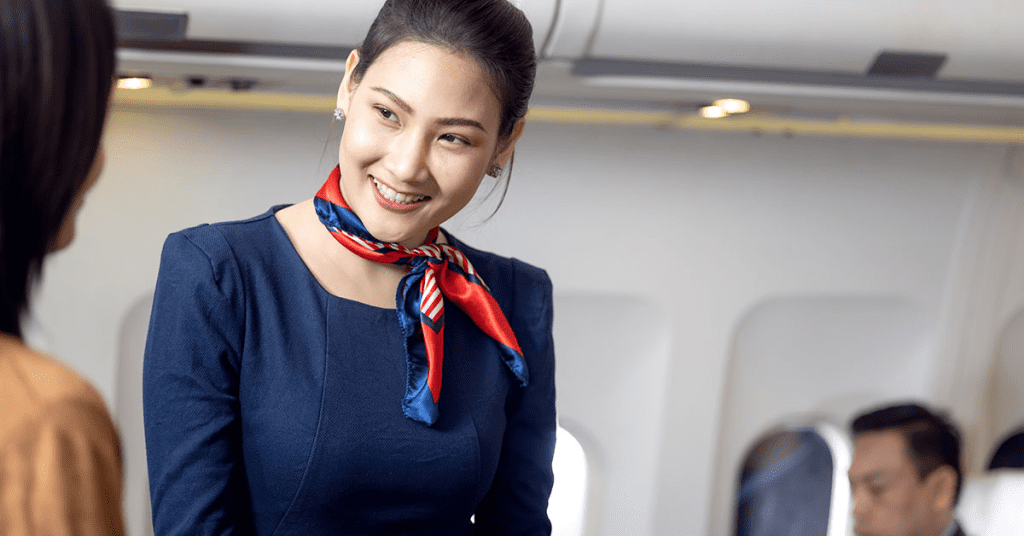When you board a plane, it’s almost guaranteed that you’ll be greeted with a friendly “hello” from a flight attendant. While this might seem like nothing more than a routine courtesy, there’s actually much more going on behind that warm smile. That simple interaction plays a crucial role in ensuring the safety and comfort of everyone on board.

The greeting from a flight attendant isn’t just about being polite; it’s a subtle but essential part of their job. When you respond, flight attendants are not just noting your politeness—they’re actually conducting a quick assessment of your condition. One key aspect they’re checking for is whether you’ve consumed too much alcohol before boarding. It’s common for passengers to enjoy a drink or two at the airport bar, but if someone has had a bit too much, it could pose a significant safety risk once the plane is in the air.
Flight attendants are trained to spot signs of intoxication or illness during these initial interactions. If a passenger appears too drunk or unwell, they may be unable to safely navigate the aircraft, potentially leading to disruptive or even dangerous situations. There are numerous stories of passengers who, after having too many drinks, struggle with basic tasks like finding their seat or using the restroom, causing delays and concerns for both crew and fellow passengers.
For example, there was a case where a heavily intoxicated passenger caused quite a scene, stumbling down the plane’s aisle to the amusement of some, but to the concern of many. Such situations not only disrupt the flight but can also escalate into more serious issues that compromise everyone’s safety.
According to Iona Iachim, a flight attendant with Wizz Air, the greeting serves as a quick check on whether passengers are fit to fly. This is crucial in the confined and controlled environment of an airplane, where there’s little room to manage unexpected issues. If a passenger shows signs of being too intoxicated or unwell, flight attendants may need to take action before the plane takes off, which can include alerting the captain or requesting assistance from ground staff.

Another key reason for the greeting is to identify passengers who might be helpful in an emergency. During the boarding process, flight attendants use this interaction to gauge who among the passengers seems calm, collected, and capable. This mental note can be incredibly useful later, should an emergency arise and the crew needs to call on passengers for assistance.
For instance, someone who responds confidently and makes eye contact might be noted as a potential helper in the event of an evacuation or other emergency situation. Having this knowledge allows flight attendants to quickly locate these individuals if they need extra hands on deck.

Some passengers might misconstrue the friendly greeting as a sign of attraction, but this is rarely the case. While flight attendants strive to maintain a professional and pleasant demeanor, their primary focus is on safety and ensuring a smooth operation. There’s a bit of humor in the industry, where crew members might jokingly refer to a particularly pleasant passenger as “BOB” (Best On Board), but this is all in good fun and far from being the focus of their greeting.
It’s important for passengers to understand that while the interaction may seem casual and friendly, it’s grounded in professionalism. Flight attendants prefer to keep the atmosphere on board respectful and appropriate. If you happen to feel a connection and wish to continue a conversation, the best approach is to discreetly share your contact information when disembarking, rather than misinterpreting the in-flight interaction.

In conclusion, the seemingly simple act of greeting passengers as they board the plane is a multifaceted tool for flight attendants. It goes beyond just making you feel welcome; it’s a critical part of their role in ensuring the flight is safe and comfortable for everyone. By assessing passengers’ conditions, spotting potential helpers, and maintaining a professional environment, flight attendants use this interaction to uphold the highest standards of safety and service.
So, the next time you step onto a plane and are met with a cheerful “hello,” remember that your response is more than just a polite exchange—it’s part of a carefully designed system that helps keep you and your fellow passengers safe in the skies.


